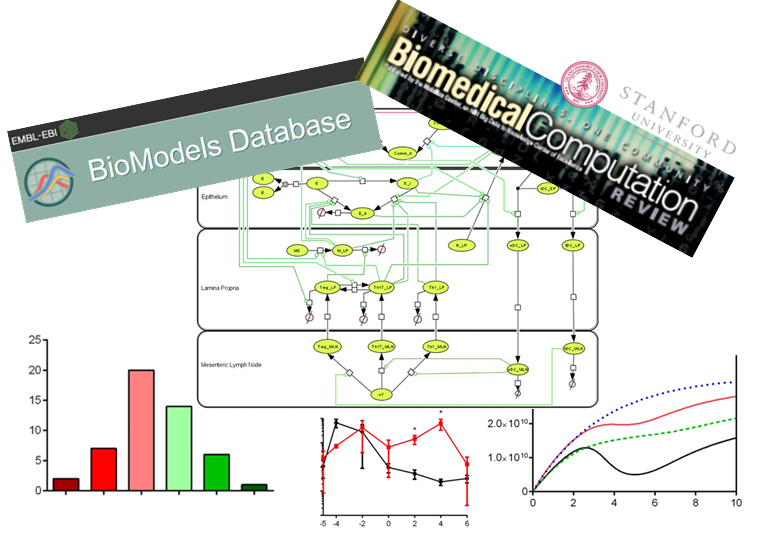Stanford’s Biomedical Computation Review Features MIEP’s Clostridium difficile model

C. difficile is a spore-forming anaerobic bacterium associated with infections following the use of broad-spectrum antibiotics. The resultant disease is characterized by exuberant intestinal inflammation, leading to nosocomial diarrhea, colitis, and even death. However, current treatments of C. difficile are largely anti-microbial based leading to high rates of reoccurrence and destruction of the indigenous microbiome. The Nutritional Immunology and Molecular Medicine Laboratory (NIMML) use of computational modeling to understand massively- and dynamically-interacting complex systems at the gut mucosa during C. difficile infection (CDI) has highlighted the value of anti-microbial-free interventions for resolving the infection while decreasing recurrence rates.
“Computational modeling efforts predict the value of antibiotic-free strategies that indirectly combat C. difficile associated diseases, such as Toxin B neutralizing antibodies or immune modulators, can be more effective than traditional antimicrobial regimens while promoting microbiome preservation and antibiotic stewardship,” said NIMML director Josep Bassaganya-Riera. “Host-targeted therapeutics that modulate immune responses in combination with Toxin B neutralization is promising avenues to increase strain coverage and microbiome preservation while decreasing recurrence of infection, and disease severity.”
The NIH/NIAID Center for Modeling Immunity to Enteric Pathogens (MIEP) model of the interactions between C. difficile, the colonic microbiome, and the host immune response has drawn the attention of the modeling community. In March of 2016, the C. difficile model was highlighted as Model of the Month on the BioModels Database, a repository for computational models. The NIMML has contributed to this
repository with 7 large-scale models of information processing representations of mucosal immune responses over the past 4 years. Additionally, the model was featured in the spring edition of the Stanford Biomedical Computation Review in an article
entitled “Computing the Gut”. In total, the tools and computational models of NIMML have been searched and
downloaded over 300,000 times with site visitors from 164 countries.
NIMML and MIEP continue to advance the understanding the mechanisms of immunoregulation underlying immune responses to C. difficile by synergistically combining computational modeling and experimental validation to improve the treatment of C. difficile-associated disease. For more information on C. difficile, please visit our web page or read the full publication of the associated work in PLOS One.
About NIMML
The NIMML Institute is a 501 (c) (3) non-profit public charity foundation focused on a transdisciplinary, team-science approach to precision medicine at the interface of immunology, inflammation, and metabolism. The NIMML Institute team has led numerous large-scale transdisciplinary projects and is dedicated to solving important societal problems by combining the expertise of immunologists, computational biologists, toxicologists, modelers, translational researchers, and molecular biologists. The Institute is headquartered in Blacksburg, VA. For more information, please visit www.nimml.org or contact pio@nimml.org.
